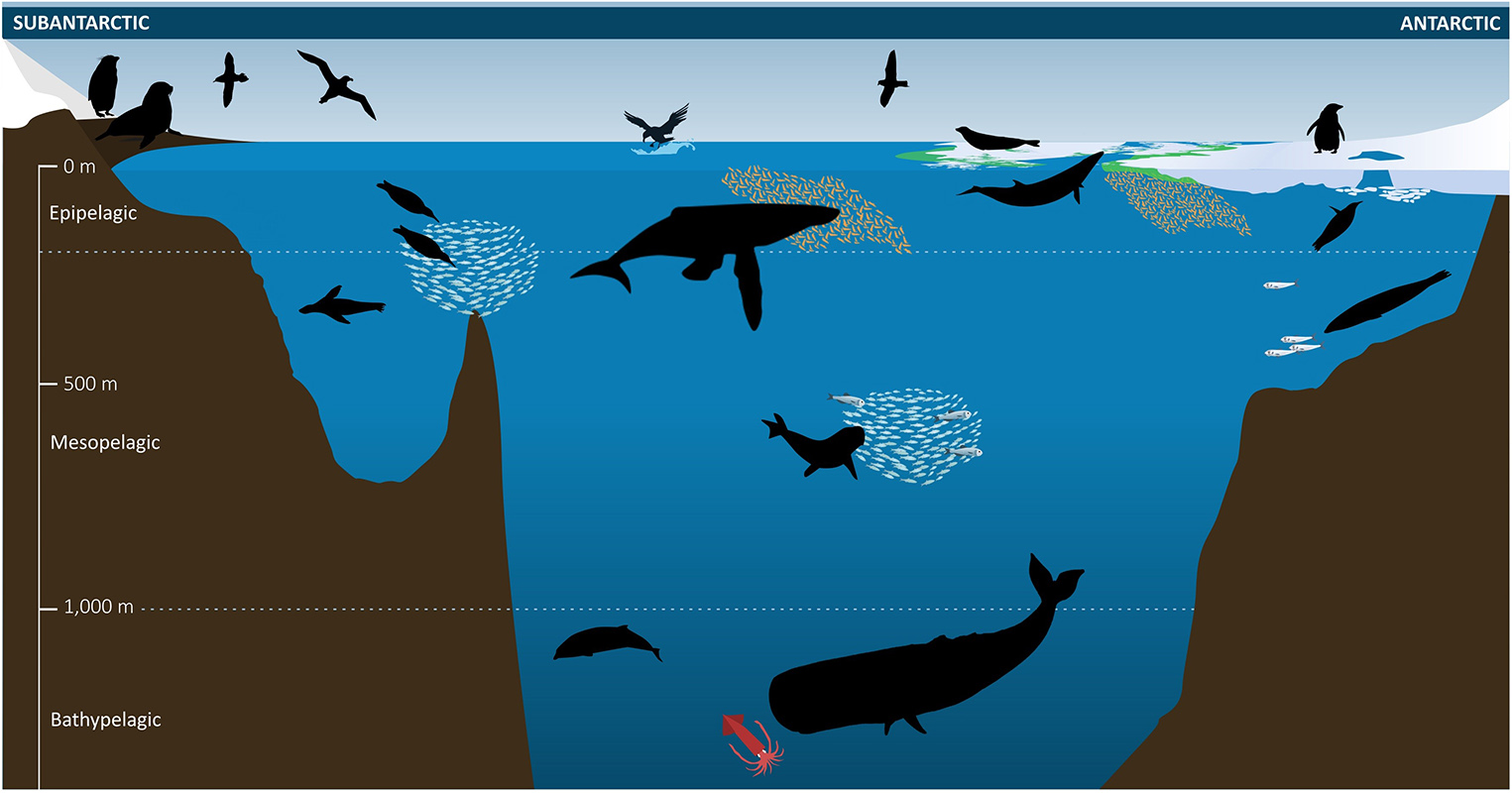A new publication, titled “Marine Ecosystem Assessment for the Southern Ocean: Birds and Marine Mammals in a Changing Climate“, has been published in Frontiers in Ecology and Evolution and will be of interest to the Antarctic community. Several SCAR members were involved in the publication. The SCAR Retrospective Analysis of Antarctic Tracking Data project (RAATD) provided data to illustrate the circumpolar distribution of top predator breeding and foraging sites in the article.

Top predators (black) distribute throughout the Southern Ocean, horizontally, from the continent to the subantarctic islands, as well as vertically, with deep-diving species following their prey down to >2000 m.
Abstract:
The massive number of seabirds (penguins and procellariiformes) and marine mammals (cetaceans and pinnipeds) – referred to here as top predators – is one of the most iconic components of the Antarctic and Southern Ocean. They play an important role as highly mobile consumers, structuring and connecting pelagic marine food webs and are widely studied relative to other taxa. Many birds and mammals establish dense breeding colonies or use haul-out sites, making them relatively easy to study. Cetaceans, however, spend their lives at sea and thus aspects of their life cycle are more complicated to monitor and study. Nevertheless, they all feed at sea and their reproductive success depends on the food availability in the marine environment, hence they are considered useful indicators of the state of the marine resources. In general, top predators have large body sizes that allow for instrumentation with miniature data-recording or transmitting devices to monitor their activities at sea. Development of scientific techniques to study reproduction and foraging of top predators has led to substantial scientific literature on their population trends, key biological parameters, migratory patterns, foraging and feeding ecology, and linkages with atmospheric or oceanographic dynamics, for a number of species and regions. We briefly summarize the vast literature on Southern Ocean top predators, focusing on the most recent syntheses. We also provide an overview on the key current and emerging pressures faced by these animals as a result of both natural and human causes. We recognize the overarching impact that environmental changes driven by climate change have on the ecology of these species. We also evaluate direct and indirect interactions between marine predators and other factors such as disease, pollution, land disturbance and the increasing pressure from global fisheries in the Southern Ocean. Where possible we consider the data availability for assessing the status and trends for each of these components, their capacity for resilience or recovery, effectiveness of management responses, risk likelihood of key impacts and future outlook.
Reference:
Bestley Sophie, Ropert-Coudert Yan, Bengtson Nash Susan, Brooks Cassandra M., Cotté Cédric, Dewar Meagan, Friedlaender Ari S., Jackson Jennifer A., Labrousse Sara, Lowther Andrew D., McMahon Clive R., Phillips Richard A., Pistorius Pierre, Puskic Peter S., Reis Ana Olivia de A., Reisinger Ryan R., Santos Mercedes, Tarszisz Esther, Tixier Paul, Trathan Philip N., Wege Mia, Wienecke Barbara. “Marine Ecosystem Assessment for the Southern Ocean: Birds and Marine Mammals in a Changing Climate.” Frontiers in Ecology and Evolution 8, 2020. doi: 10.3389/fevo.2020.566936
